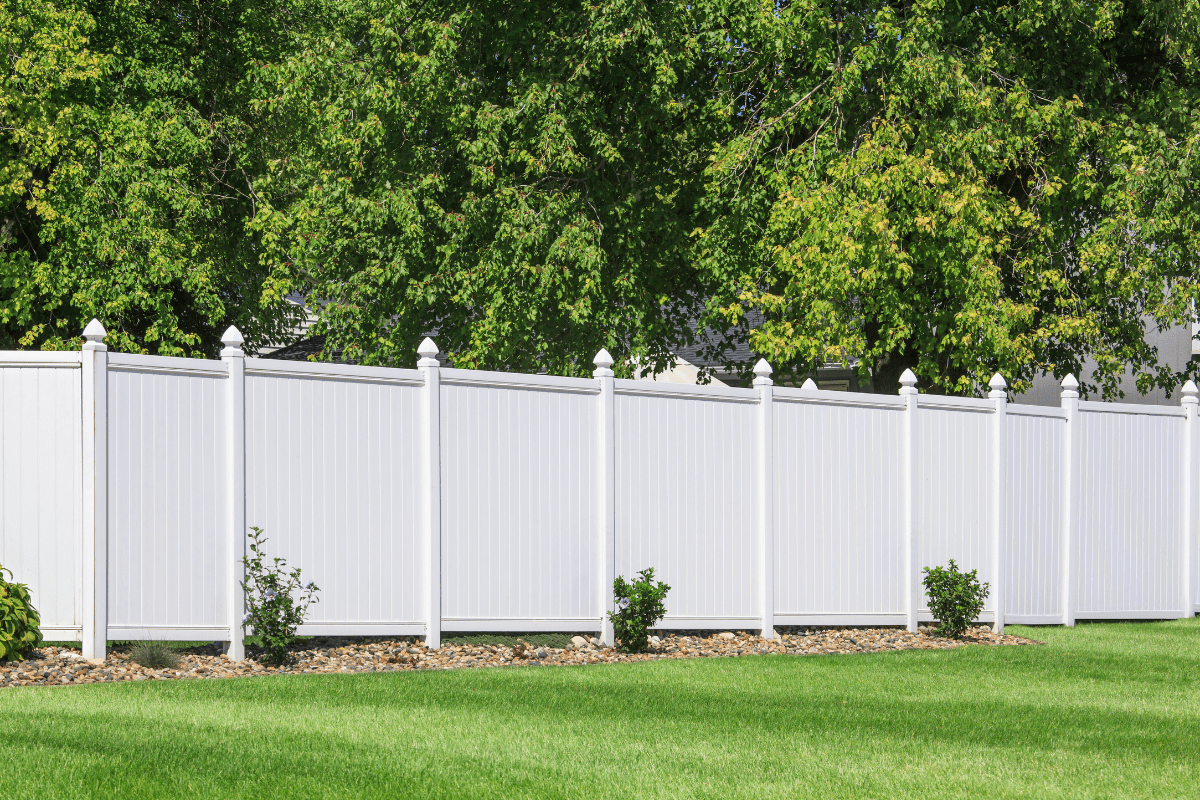Contents
When you live in an HOA community, it’s pretty common to share a fence with one or more of your neighbors. A good fence can provide you with a bit of privacy, and also offer a clear demarcation of where your space ends and your neighbor’s begins. With that said, fences can also cause some friction, especially if you decide you want to update or rebuild a fence. Similarly, the decision to construct a new fence can be complicated for those who live in homeowners associations.
Simply put, there are usually going to be some fence guidelines and fence installation requirements in place, ensuring that any fence project homeowners embark on complies with the community’s aesthetic values. This is an important way in which the HOA can uphold property values.
As a member of the HOA Board, you should be up to speed on any regulations your community has imposed on residential security fences and privacy fences. And, you should be prepared to handle any disputes that might arise over a fencing project in your neighborhood.
In this post, we’ll suggest some guidelines for Board members who hope to assist property owners through their own fencing projects. With any questions, make sure you reach out to your HOA management company. If you happen to be in North Carolina or South Carolina, keep Kuester in mind. Kuester Management Group proudly provides HOA management in Huntersville NC, Charlotte NC, Myrtle Beach SC, and HOA Management in Fort Mill SC.
Boundary Fences 101

The first thing to note is that there are multiple types of fences, but one of the most relevant is the boundary fence. This type of fence encompasses any piece of fencing that splits the property line between two neighbors.
If two homeowners have a boundary fence between them, they share ownership of it. In other words, the fence belongs as much to one neighbor as to the other. So, if a homeowner wants to paint a fence, tear down a fence, or augment it in any way, they first need to check the property map to determine whether it’s truly theirs, or whether they share ownership with their neighbor.
This is an important way to prevent any infringement on a homeowner’s rights, but it’s also just a polite thing to do. As an HOA Board member, encourage all residents to talk with their neighbors before starting a fence-related project. Clear communication and basic politeness can go a long way toward mitigating potential conflicts.
Considering Common Fence Guidelines
Your community probably has residential fence laws in place, and it’s always a good idea to consult with those laws before engaging with any project regarding backyard fences. With that said, most residential fence laws tend to be pretty loose. As such, your HOA may want to develop its own set of guidelines, and enforce them with a bit more firmness.
Fence laws should be considered only when necessary to encourage peace between neighbors, to protect individual property laws, and to maintain the value of properties within the community.
Two of the most common fence guidelines to consider include:
- Fence height regulations; for instance, a rule that no fence is shorter than six feet, or that individual slats are no more than nine inches wide.
- Setbacks; these are rules dictating that fences must be positioned a certain number of feet away from the property line. In other words, this is a regulation to avoid any boundary fences.
Additional Considerations for Fence Modification

Additionally, HOA Board members might consider certain processes for homeowners who wish to modify an existing fence. Whatever fencing standards or fencing bylaws you develop should be clearly outlined in your community’s governing documents.
Most associations require a process like this:
- First, homeowners must communicate their fence plans with all of their neighbors who have properties touching the fence. If all neighbors are not on board with the project, that could lead to some tension in the community. Ultimately, the homeowner who wishes to change their fence may need to make some sort of concession, agreeing to foot the cost of the project or compromise on the color of the wood stain. Clear communication is always a predicate to a successful fence project.
- The next step for homeowners to take is to seek approval from the HOA’s architectural review committee. The association may dictate the aesthetics of the fence so that all fences in the community have a neat, uniform look. Homeowners should not start calling fence companies before talking with the architectural review committee. By getting ahead of themselves or circumventing the approval process, homeowners may risk fees, penalties, or legal action.
- Homeowners will always need to get the proper municipal permits for their projects. Zoning applications must be approved before the process can start.
- Finally, homeowners should always be advised to select a local contractor or fence company that has a good reputation, and that understands all of the HOA requirements (e.g., restrictions on fence height). Your HOA may even want to have a list of approved partners that you can offer homeowners.
Preparing for Fence Disputes
Even if you have the right processes in place, it’s inevitable that a fence-related dispute will arise sooner or later. This may be over anything from poor fence maintenance to fence aesthetics, or to the construction of a new fence that obstructs one neighbor’s view.
Hopefully, emphasizing clear communication between homeowners will help you keep disputes to a minimum. When an issue does arise, though, advise homeowners to first discuss it together, seeking a mutually agreeable solution. If that doesn’t work, the HOA may need to intervene.
To make certain that your HOA is on solid footing, and has the requisite authority to handle a fence dispute, be sure your governing documents address things like fence height, fence aesthetics, obstructed views, etc. Also highlight the requirements for proper fence maintenance, and be sure you enforce these requirements with fairness and consistency.

With any questions about how to handle fence disputes in your NC or SC HOA, don’t hesitate to contact Kuester Management Group directly.
Frequently Asked Questions
Can the HOA prohibit fences?
Some HOAs do prohibit fences, or at least certain types of fences (e.g., wooden ones). Typically, these prohibitions are written into the community bylaws from the very beginning.
Who owns the fence between two houses?
While fence laws can vary from state to state, the general guideline is that a boundary fence, one that falls right on the property line, is the shared property of both homeowners. To ensure a fence that is legally their property, homeowners may wish to consider a setback (e.g., building their fence a few feet back from the property line).
How do I get around HOA rules?
The reality is that trying to go around HOA rules, especially with regard to something like a fence, can end poorly, often resulting in fees, penalties, or even a lawsuit. Homeowners are advised against looking for ways to go around the Association’s policies.
How can I build privacy in my backyard without a fence?
There are a number of options to consider: Planting trees, installing a retractable canopy, constructing a hanging screen, adding outdoor drapery panels, and more.

